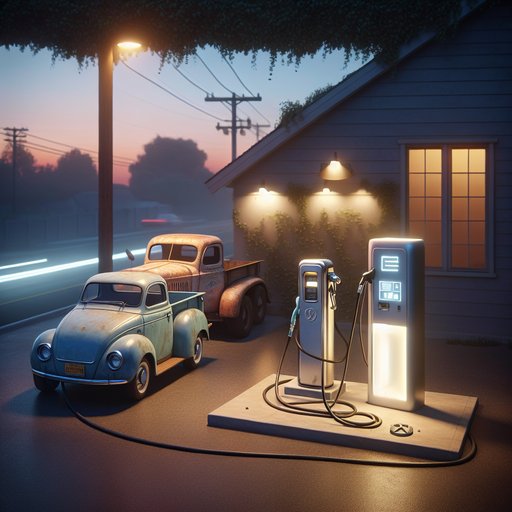
A decade ago the diesel pump handle felt like a hinge to the future; now it sits beside chargers humming with their own promise. The decline of diesel engines in personal transportation has not been a sudden collapse but a steady narrowing of options, a recalibration of values at the intersection of policy, engineering, and habit. The soundscape of the road has changed, and with it the rituals of driving. This is not a eulogy and not an indictment. It is a look in the rearview mirror while the lane ahead fills with new markings, new rules, and a different kind of power.
At a motorway service area on a winter morning, the diesel canopy used to be the busiest corner. Sedans gathered there, idling in a syncopated clatter that carried across the car park. Today, vans still swing in and out, but the family cars form a line at the chargers, coffee cups on roofs, apps open to track kilowatts instead of liters. The diesel pump keeps time with a smaller crowd, a sign of how the daily commute has shifted.
Fewer compact hatchbacks queue for the black nozzle, and the cars that do seem taller, heavier, more purposeful—vehicles that still ask more from the engine than a city errand list can justify. The arc that brought diesel here began with a promise woven into policy and thermodynamics. High compression and lean burn delivered strong real-world economy; turbochargers and common-rail injection gave the engines manners and torque. Governments in Europe, focused on lowering fleet-average CO2, taxed fuel and road use in ways that favored compression ignition.
In the 2000s and early 2010s, badges like TDI, HDi, dCi, and JTD multiplied on tailgates, and diesel claimed more than half of new car sales in several markets. Long-legged range and highway composure made it the rational choice for drivers who measured travel in hundreds of kilometers. The momentum faltered when lab figures and street air diverged. The 2015 emissions scandal exposed defeat devices and laid bare a gap between certification cycles and real-world nitrogen oxide emissions.
Trust, once reinforced by spreadsheets and cost-per-mile calculations, bent under the weight of headlines and lawsuits. Regulators responded by overhauling the test regime: WLTP replaced the gentle choreography of the old cycle, and on-road RDE checks brought portable analyzers to the curb. Diesels could still meet the numbers, but the compliance now demanded an orchestra of aftertreatment and careful calibration that altered the cost and complexity at exactly the moment public sentiment cooled. In service bays, the shift was tactile.
Diesel particulate filters filled with ash and needed regeneration; short, cold trips in urban traffic turned soot into service appointments. Selective catalytic reduction systems, fed by urea through blue-capped fillers, became standard, adding tanks, heaters, sensors, and a new category of “refill” to the owner’s routine. High-pressure fuel pumps asked for cleaner fuel and precise maintenance. These were not deal-breakers for the right use case, but for short-haul, stop-start commuting, they made the technology feel like a specialist arriving to do a generalist’s job.
Meanwhile, gasoline engines learned new tricks—direct injection, Miller-cycle strategies, 48-volt mild hybridization—and hybrids translated city traffic into recovered energy rather than wasted idle. Outside the workshop, policy put up signposts that shaped habits. City centers experimented with low-emission zones and enforcement cameras. London’s ULEZ turned compliance into a daily cost for older diesels; in Paris, Crit’Air stickers sorted cars into categories, and high-pollution days made those stickers more than decoration.
German courts allowed municipalities to block certain diesels from specific streets; drivers learned new routes, or they learned that the easiest route was away from diesel entirely. These rules did not ban the technology outright but created a maze of conditions where choosing a diesel for school runs and shopping trips felt like the wrong key for too many doors. Manufacturers read the map and rerouted. Small hatchbacks and crossovers quietly dropped diesel options as the cost of certification, on a per-variant basis, outgrew the shrinking demand.
One by one, brands announced the end of diesel in their compact passenger range, while keeping the engines in larger estates and SUVs where towing and long-distance duty still aligned with the diesel brief. Plug-in hybrids took over the tax-friendly company car niche that diesels once dominated. The EU’s decision to require zero tailpipe emissions from most new cars starting in 2035 drew a horizon line that rationalized investment: electric platforms scaled up; diesel R&D narrowed to commercial vehicles and a few premium models that could justify the hardware and calibration effort. At the pump, economics delivered its own message.
The historical tax advantage that made diesel cheaper at the nozzle narrowed in several countries. Refining and geopolitics turned price boards volatile; in 2022, disruptions to middle-distillate supply sent diesel above gasoline for sustained periods in Europe, erasing a key pillar of the total-cost-of-ownership case. When monthly budgets meet uncertainty, buyers gravitate toward simplicity, and the resale signals followed: used diesels that once sold themselves on frugality now sat longer unless they were Euro 6d-compliant and long-haul ready. The calculation that had been automatic—diesel for the motorway, petrol for the city—blurred as hybrids delivered steady 5–6 L/100 km in mixed driving and needed no special chemistry besides washer fluid.
Still, there is a feel to diesel that numbers only approximate. The low-rpm surge that swallows a grade without a downshift, the way a long-haul run settles at low revs with few interruptions, the quiet when cruising that belies the idle clatter—these are qualities that built loyalty. For drivers who measured journeys in continents rather than suburbs, the ability to cover 1,000 kilometers on a tank felt like freedom made tangible. Some of that character has been absorbed by electric motors, whose instant torque makes overtakes easy and whose range anxiety has steadily become range management.
Yet the sensory swap is real: the faint whir and regenerative tug are different companions than boost and compression. The decline is not absolute; it is selective. Heavy-duty trucks still make their case on energy density and refueling speed, and in personal transportation, rural drivers with long distances and sparse charging can still justify a modern diesel’s efficiency. Euro 6d diesels, paired with sophisticated aftertreatment, can post very low on-road emissions under the new test regimes.
But the market is indifferent to nuance when broad trends settle in. The diesel plug-in hybrid, a neat idea on paper for highway commuters, never overcame its weight and complexity in practice. Synthetic fuels and bio-components promise lower lifecycle CO2, but their economics favor fleets and aviation before family cars. Policy carved a pathway for zero-emission tailpipes, and industry capital followed the pavement it laid.
To walk through a dealership today is to see this story condensed into floor space. Where a diesel compact once sat under a poster bragging about torque, a battery-electric model now waits under a wall charger, its brochure featuring public charging maps and warranty on kilowatt-hours. The change is not a verdict on the past as much as a reorganization around new constraints and possibilities. Urban air is cleaner in many places; streets are quieter at rush hour; the skill set of mechanics is shifting.
Diesel has not been exiled so much as reassigned—to where its strengths remain relevant and its compromises are not daily irritants. What fades is the default assumption that it belongs in the driveway by default. In that sense, the decline is less a fall than a retuning. The world asked for lower CO2, cleaner air, predictable compliance, and a driving experience that fits the corridors of modern life.
Diesel answered as far as physics, chemistry, and cost allowed. The rest is being taken up by electrons and, in some niches, by different fuels. The black pump handle will keep moving, but not with the everyday rhythm it once commanded. Its new cadence belongs to those who still need what it does best, while the rest of the traffic drifts toward other sounds, other gauges, other habits.
The clatter grows faint, not erased, but part of a quieter background to the same, ongoing journey.












































